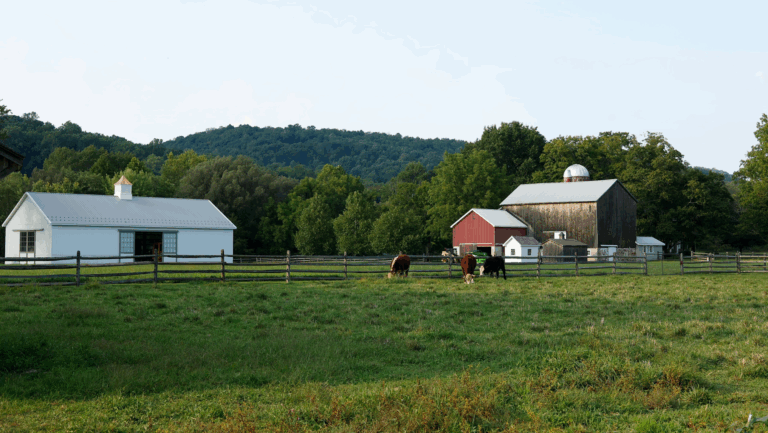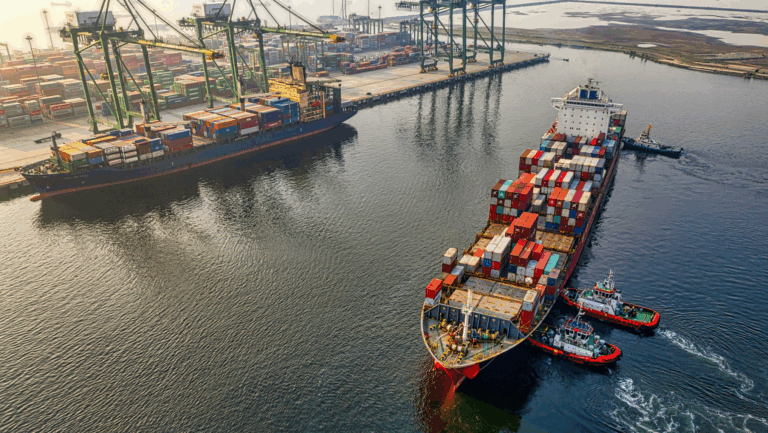Farm Labor Series: Immigration and Agriculture
Farm labor shortages aren’t new, but stricter immigration enforcement is raising the stakes.
For decades, U.S. agriculture has faced a persistent farm labor shortage. The issue stems from a combination of factors, including limited domestic interest in agricultural work, complex immigration laws, and an H-2A visa system that fails to meet the industry’s seasonal and skilled labor needs. Today, these pressures are colliding with rising costs, delayed government programs, and heightened political debate over immigration reform and its impact on U.S. agriculture.
As farms face tightened margins and fewer hands in the field, the conversation about immigration isn’t just political theater—it has a direct impact on their livelihood and our food system as a whole. The future of American agriculture depends on finding balanced, workable solutions that secure a legal, reliable, and affordable workforce.
“It’s a crisis rippling across our economy that affects the crops in our fields and ultimately the shelves in your local grocery store.”
Shay Myers, Oregon farmer
The Impact of Immigration on Agriculture
The U.S. agricultural workforce is the backbone of farm productivity, yet its structure has shifted dramatically in recent decades. According to the 2022 USDA Census of Agriculture, nearly 2.2 million hired farmworkers support U.S. agriculture.
While exact numbers are difficult to determine, it is estimated that roughly 70 percent of hired crop workers are foreign-born, with about 40 percent lacking legal work authorization. Unauthorized labor peaked at 55 percent around 2000 but remains a key part of the nation’s farm labor pool.
Equally significant is the changing nature of that workforce. Today, 83 percent of hired crop farmworkers are considered “settled”, which means working within 75 miles of their homes. This category of U.S. farm labor has increased 41 percent since the late 1990s. This shift reflects a move away from the traditional migrant model toward a more permanent, community-based labor workforce.
Meanwhile, the average age of foreign-born farmworkers has risen by seven years since 2006, highlighting an aging labor pool with fewer young immigrants entering agriculture. Research from Michigan State University estimates that half of all farms can’t hire all the workers they need, operating with an average 20 percent workforce deficit.
The relationship between immigration and agriculture is a delicate one, but this data presents several standing truths.
- Immigration remains indispensable. Roughly seven in 10 farmworkers are not born in the U.S., underscoring the reliance on immigrant labor to sustain production.
- The workforce is trending towards a more “settler” demographic. There is an increasing number of farm workforce families who have established roots in the U.S., with a portion lacking legal status.
- Aging trends pose future risks. Just like the average age of the American Farmer, the agricultural workforce is growing older. Fewer new entrants could deepen long-term shortages further if left unaddressed.
- Regional disparities persist. The farm labor shortage is more pronounced in some areas than others. California, for example, relies heavily on unauthorized labor, while the Midwest employs more U.S.-born workers due to mechanization.
“It is clear to me that we can either import our workers or import our food — and that’s a key issue we need to answer.”
Matt Teagarden, Kansas Livestock Association
Immigration Reform That Supports U.S. Agriculture
Immigration reform is often viewed through political lenses, but for agriculture, it’s a matter of survival. A workable policy must balance border security with workforce stability to ensure American farms have access to the labor they need to operate efficiently and affordably.
“Farmers need meaningful reform that addresses the concerns of both workers and growers.”
Zippy Duvall, American Farm Bureau Federation
Three Ways to Strengthen Agriculture Through Immigration Reform
1. Establish a Pathway to Legal Status
Previous attempts, such as the Farm Workforce Modernization Act of 2021, sought to establish a process for undocumented farmworkers to obtain certified agricultural worker status. While the bill ultimately stalled, it reflected growing recognition that the agricultural workforce needs stability and long-term legal recognition to sustain U.S. food production.
2. Modernize the H-2A Program
Farmers consistently describe the H-2A visa program as “essential but broken.” Delays, administrative hurdles, and cost burdens have left many operations short-handed at critical times. The ongoing government shutdown has exacerbated certification backlogs, particularly in Florida, where the Florida Fruit & Vegetable Association warns that 40 percent of the state’s annual H-2A workforce may not arrive in time for harvest, threatening millions in unrecoverable crop losses.
Reforming the H-2A program to allow multi-season permits, expedite processing, and ensure better wage consistency would immediately alleviate pressure on specialty crop producers.
3. Listen to Farmer Input
Farmers bring real-world insight into seasonal needs, workforce gaps, and practical solutions. Policy without their input risks lost production, higher prices, and, ultimately, immigration reform that falls short.
Organizations like Grow It Here are amplifying farmers’ voices in Washington, calling for policies that recognize the vital role of agricultural labor in food security.
“Without a dependable workforce, we risk losing family farms and moving more of our food production overseas — forcing Americans to rely on imported produce.”
Kristi Boswell, Grow it Here
We’re Here to Support You
While the future of immigration reform ultimately lies in policymakers’ hands, you can take steps today to safeguard your operation. Strategic investments in automation, efficiency technology, and financial flexibility can help mitigate labor risk in the long term.
At AgAmerica, we understand how financing ties into your operational decisions—from upgrading equipment to maintaining liquidity when labor programs fall short. Our custom financing solutions are designed to help producers stay agile through shifting labor conditions while having a team in your corner committed to your long-term success.
Contact AgAmerica today to discuss how to align your financing strategy with your labor-risk strategy and build a stronger, more resilient operation for the future.






